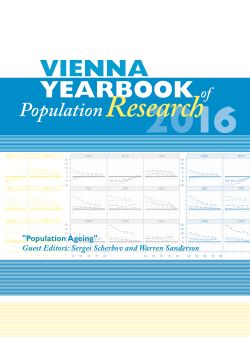
Vienna Yearbook of Population Research 2016, pp. 089-106, 2018/03/12
Special issue on “Population ageing”

The aim of this research is to show trajectories of population ageing in Serbia according to chronological and prospective criteria. The data used are from the complete period life tables published around the census years from 1953 to 2011. The emphasis is on the most recent period, since these data allow us to incorporate a regional dimension into the study, and to carry out the analysis at the municipal level. Throughout this study period, the prospective age threshold in Serbia was below the retrospective threshold; as a consequence, the proportion of people with a life expectancy of 15 years or less was consistently higher than the share of people aged 65 or older. Only the most recently available data for 2010/2012 indicate that the share of the population with a life expectancy of 15 years or less was the same as the share of the population aged 65+, albeit with uneven contributions by the male and female populations. Indeed, the use of the prospective approach highlights the unfavourable mortality conditions in Serbia, which are not made clear when only the chronological approach to population ageing is applied.
Keywords: Demography; Aging; Population; Serbia